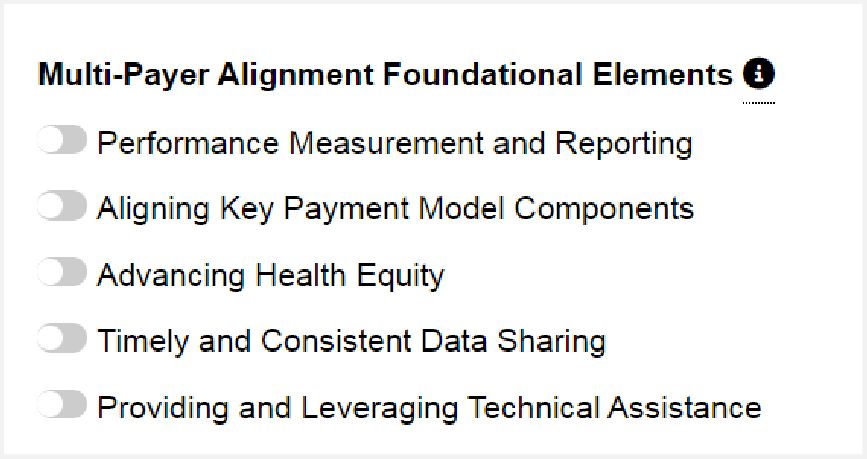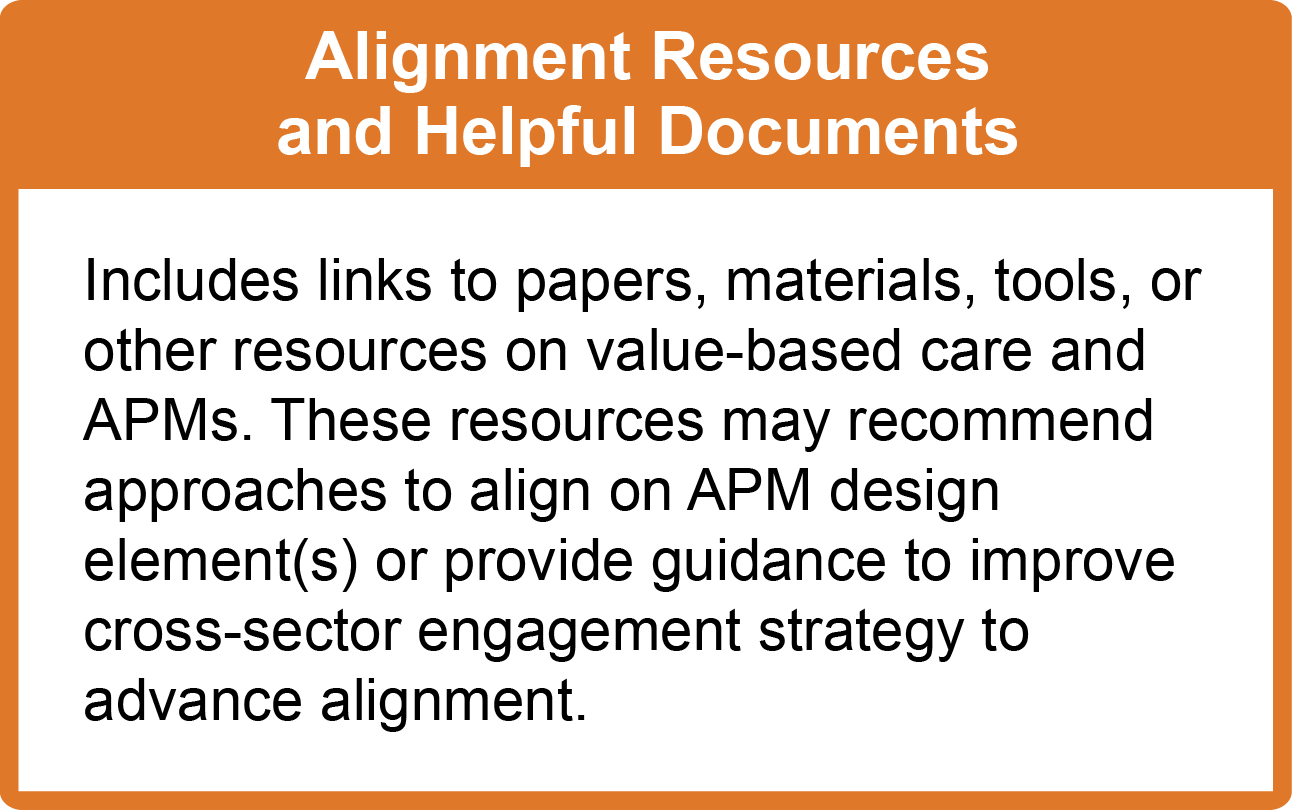June 10, 2015
Co-presenters answer participants’ questions on alternative quality contracts, accountable care organizations, and quality measures.
Dana Gelb Safran - Blue Cross Blue Shield of Massachusetts
The contract model is physician-centric in that organizations may choose to have one hospital (or multiple) as a signatory to their contract, but they are not required to. Regardless of whether the organization chooses to share risk/reward with a hospital, they do agree to be accountable for the cost and quality of hospitals used by their members. About half of AQC contracts have hospital(s) as a formal signatory to their AQC contract. All AQC organizations have succeeded in achieving savings, so those who achieved savings include some that use an employed physician model, but also include other models, including affiliates.
We have not analyzed the data in a way that links savings to specific quality improvements. However, as the chronic condition management improvements have occurred, we have seen corresponding declines in ambulatory sensitive admissions, as well as nonurgent emergency department visits and readmissions.
It was an easy sell. No one in our provider community liked or wanted to hold only the performance targets that were relative or the model that had a single score as a threshold. And internally at BCBS-MA, it was immediately apparent to my colleagues that using absolute performance targets and a range of scores was a superior way to design the incentives (more motivating, more transparent, likely to deliver better results, simplified administrative issues by virtually eliminating appeals process, etc.).
They are varied. Most groups have added case managers to work with patients who are chronically ill and particularly those at risk of hospitalization or re-hospitalization. These are sometimes nurses and sometimes social workers. Some have added pharmacists to the team. Many/most are building out staff to allow integration of behavioral health care into primary care (using social workers or cognitive behavioral therapy (CBT) experts).
Massachusetts had one of the highest rates of adoption of CMS ACO models, including five of the original Pioneers, and all five remain in the program and are succeeding. Many others have adopted Medicare Shared Savings Program (MSSP). So with Medicare and BCBS-MA, this represents well over half of most practices’ population. The other two large commercial payers have begun to establish some global budget contracts. In many cases, this was at providers’ urging, because providers who opted into AQC and Pioneer (or MSSP) wanted to align their business and have a common set of incentives across payers. Medicaid has not yet moved to a global budget model but appears to be preparing to do so.
The early adopters (2009) really didn’t need a push. They were aligned in the vision that we could, collectively, do better on cost and quality and that we should. They had confidence they could manage well in a global budget model. The 2010 adopters were similar. By 2011, talk of payment reform was heating up both nationally and locally. Locally, the state had a payment reform commission that advised that the state move to global budget contracts across all payers. So the next wave of providers (and possibly some in the 2010 cohort) likely opted in because they felt it would be good to learn this way of managing their business before it became the sole way of doing business. They also wanted to do it with a payer who was providing significant support. The AQC support model that I described includes actionable data and analytics, consultative support on improvement, best practice sharing forums, etcetera. Momentum built from there, as providers began to feel that this way of paying was coming, and that they should begin the process, again, with the benefit of a payer who would help them learn. Around 2010, there were some providers who said “We know this is the right thing to do, but we are not ready to do it.” The momentum that built in the state, and the sense that this was coming nationally, was a big part of what moved organizations to opt into the model. In addition, the very strong spotlight on health care costs and cost growth in Massachusetts, which followed implementation of coverage reform which persists today, created an environment in which providers felt some pressure to participate in solving the cost and cost growth problem, and payment reform was understood to be critical to that.
Dr. Barbara Spivak - Mount Auburn Cambridge Independent Practice Association
The biggest thing that would help is if payers aligned on quality metrics. Take Medicare, for example: we have Medicare Advantage and we’re a Pioneer ACO, but the metrics aren’t aligned. We can get commercial payers to align but can’t get government to align. There are over 100 metrics; not all are clinically valid. Getting better metrics and aligning commercial payers and Medicare would help doctors focus on where there’s real significance. People want clinically relevant measures and they want alignment.
We’ve looked at ways of distributing surplus. We give 50% of our surplus to the Primary Care Providers (PCPs) and 50% to specialists. Of the portion going to PCPs, 15% is based on both process and outcome measures. Eighty-five percent is given to the PCPs based on member months. Specialists are required to perform a quality improvement project approved by the IPA for their 15% quality bonus. The 85% is then based on RVUs. We monitor other utilization metrics but don’t give rewards based on them. For example, we monitor in our plan the number of visits per 1000 by group, urging our PCPs to see the patients more in the office, thereby decreasing emergency room use and hospitalization.
We also take a portion of the surplus and reward the doctors who participate in meetings and work with the IPA to improve our processes. We call these activity points. Depending on the year and the amount delegated for this, doctors can earn up to an extra $50 per meeting at the end of the year.
Yes, and it must be done annually to get 15%. When we first did it, not every specialist did a project, so they didn’t get 15%; some did bogus projects in the past and didn’t get the 15%. Over the years, quality projects have become incredibly real and impressive. They know they need good projects with good results to get money. We highlighted some projects that were really impressive.
That’s right. All PCPs are either in PatientCentered Medical Homes (PCMHs) or in the process of joining one. PCMHs have lots of projects embedded in them. We have 100 quality measures that PCPs must work on all the time—that’s enough.
Great question. Patient Reported Outcomes (PRO) measures aren’t sufficiently sophisticated to pay individual doctors for the results, including PHQ-9. We ask our doctors to use Patient Health Questionnaire (PHQ-9) and measure them on whether they do and if they do full risk assessment. But measuring whether they DO the test is different from whether they can affect RESULTS of the test. PROs don’t pay on the level of individual doctor results. It wouldn’t be fair to doctors. Patients who are sicker will have different outcomes than healthy patients. We don’t want to give disincentives to doctors who take care of sicker people. Clinical outcomes are important. We reward PCPs on the percent of patients whose cholesterol and diabetes are under control. On the behavioral side, we ask that PCPs do PHQ-9; if the result is 10 or above we ask that they do a follow up plan, but we don’t offer rewards to get it down, e.g. from 16. It’s a practice measure, not an outcome measure.
Medicare was involved, without a lot of input from people on ground doing patient care. It was a high level, academic approach. On the commercial side, the Blue Cross Alternative Quality Contract (AQC) was partly based on what the health plan is judged on for their quality. For example: one of the worst measures is bronchitis, and whether you give antibiotics or not. All it measures is whether you code properly, nothing about actual clinical care. Unfortunately, this is measured by NCQA so they need us to do well on that. Some measures are based on what you are able to measure, and what standard HEDIS measures are. Some of us as providers push to look at results, not just that one did a test. So mostly it’s payers with a little bit of provider input.
In Massachusetts, most large local plans, like Tufts and Harvard Pilgrim, have a component of their contracts that do have a quality component. It’s not as robust as Blue Cross on quality.


















 Emily DuHamel Brower, M.B.A., is senior vice president of clinical integration and physician services for Trinity Health. Emphasizing clinical integration and payment model transformation, Ms. Brower provides strategic direction related to the evolving accountable healthcare environment with strong results. Her team is currently accountable for $10.4B of medical expense for 1.6M lives in Medicare Accountable Care Organizations (ACOs), Medicare Advantage, and Medicaid and Commercial Alternative Payment Models.
Emily DuHamel Brower, M.B.A., is senior vice president of clinical integration and physician services for Trinity Health. Emphasizing clinical integration and payment model transformation, Ms. Brower provides strategic direction related to the evolving accountable healthcare environment with strong results. Her team is currently accountable for $10.4B of medical expense for 1.6M lives in Medicare Accountable Care Organizations (ACOs), Medicare Advantage, and Medicaid and Commercial Alternative Payment Models. Mr. James Sinkoff is the Deputy Executive Officer and Chief Financial Officer for Sun River Health (formerly known as Hudson River HealthCare), and the Chief Executive Officer of Solutions 4 Community Health (S4CH); an MSO serving FQHCs and private physician practices.
Mr. James Sinkoff is the Deputy Executive Officer and Chief Financial Officer for Sun River Health (formerly known as Hudson River HealthCare), and the Chief Executive Officer of Solutions 4 Community Health (S4CH); an MSO serving FQHCs and private physician practices. Victor is the Chief Medical Officer for TennCare, Tennessee’s Medicaid Agency. At TennCare, Victor leads the medical office to ensure quality and effective delivery of medical, pharmacy, and dental services to its members. He also leads TennCare’s opioid epidemic strategy, social determinants of health, and practice transformation initiatives across the agency. Prior to joining TennCare, Victor worked at Evolent Health supporting value-based population health care delivery. In 2013, Victor served as a White House Fellow to the Secretary of Health and Human Services. Victor completed his Internal Medicine Residency at Emory University still practices clinically as an internist in the Veteran’s Affairs Health System.
Victor is the Chief Medical Officer for TennCare, Tennessee’s Medicaid Agency. At TennCare, Victor leads the medical office to ensure quality and effective delivery of medical, pharmacy, and dental services to its members. He also leads TennCare’s opioid epidemic strategy, social determinants of health, and practice transformation initiatives across the agency. Prior to joining TennCare, Victor worked at Evolent Health supporting value-based population health care delivery. In 2013, Victor served as a White House Fellow to the Secretary of Health and Human Services. Victor completed his Internal Medicine Residency at Emory University still practices clinically as an internist in the Veteran’s Affairs Health System. Dr. Brandon G. Wilson, DrPH, MHA (he, him, his) joined Community Catalyst as the Director of the Center for Consumer Engagement in Health Innovation, where he leads the Center in bringing the community’s experience to the forefront of health systems transformation and health reform efforts, in order to deliver better care, better value and better health for every community, particularly vulnerable and historically underserved populations. The Center works directly with community advocates around the country to increase the skills and power they have to establish an effective voice at all levels of the health care system. The Center collaborates with innovative health plans, hospitals and providers to incorporate communities and their lived experience into the design of systems of care. The Center also works with state and federal policymakers to spur change that makes the health system more responsive to communities. And it provides consulting services to health plans, provider groups and other health care organizations to help them create meaningful structures for engagement with their communities.
Dr. Brandon G. Wilson, DrPH, MHA (he, him, his) joined Community Catalyst as the Director of the Center for Consumer Engagement in Health Innovation, where he leads the Center in bringing the community’s experience to the forefront of health systems transformation and health reform efforts, in order to deliver better care, better value and better health for every community, particularly vulnerable and historically underserved populations. The Center works directly with community advocates around the country to increase the skills and power they have to establish an effective voice at all levels of the health care system. The Center collaborates with innovative health plans, hospitals and providers to incorporate communities and their lived experience into the design of systems of care. The Center also works with state and federal policymakers to spur change that makes the health system more responsive to communities. And it provides consulting services to health plans, provider groups and other health care organizations to help them create meaningful structures for engagement with their communities. Tamara Ward is the SVP of Insurance Business Operations at Oscar Health, where she leads the National Network Contracting Strategy and Market Expansion & Readiness. Prior to Oscar she served as VP of Managed Care & Network Operations at TriHealth in Southwest Ohio. With over 15 years of progressive health care experience, she has been instrumental driving collaborative payer provider strategies, improving insurance operations, and building high value networks through her various roles with UHC and other large provider health systems. Her breadth and depth of experience and interest-based approach has allowed her to have success solving some of the most complex issues our industry faces today. Tam is passionate about driving change for marginalized communities, developing Oscar’s Culturally Competent Care Program- reducing healthcare disparities and improving access for the underserved population. Tamara holds a B.A. from the University of Cincinnati’s and M.B.A from Miami University.
Tamara Ward is the SVP of Insurance Business Operations at Oscar Health, where she leads the National Network Contracting Strategy and Market Expansion & Readiness. Prior to Oscar she served as VP of Managed Care & Network Operations at TriHealth in Southwest Ohio. With over 15 years of progressive health care experience, she has been instrumental driving collaborative payer provider strategies, improving insurance operations, and building high value networks through her various roles with UHC and other large provider health systems. Her breadth and depth of experience and interest-based approach has allowed her to have success solving some of the most complex issues our industry faces today. Tam is passionate about driving change for marginalized communities, developing Oscar’s Culturally Competent Care Program- reducing healthcare disparities and improving access for the underserved population. Tamara holds a B.A. from the University of Cincinnati’s and M.B.A from Miami University.


 Dr. Peter Walsh joined the Colorado Department of Health Care Policy and Financing as the Chief Medical Officer on December 1, 2020. Prior to joining HCPF, Dr. Walsh served as a Hospital Field Representative/Surveyor at the Joint Commission, headquartered in Oakbrook Terrace, Illinois.
Dr. Peter Walsh joined the Colorado Department of Health Care Policy and Financing as the Chief Medical Officer on December 1, 2020. Prior to joining HCPF, Dr. Walsh served as a Hospital Field Representative/Surveyor at the Joint Commission, headquartered in Oakbrook Terrace, Illinois.








